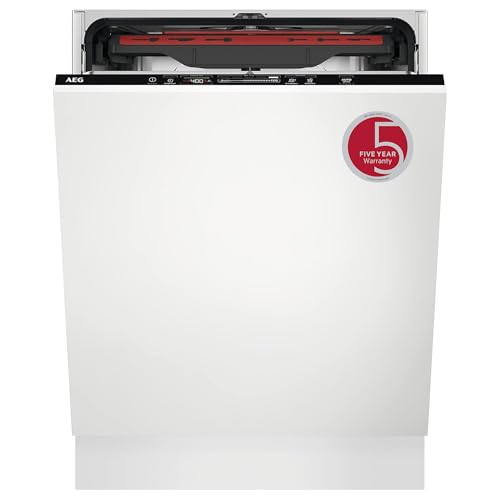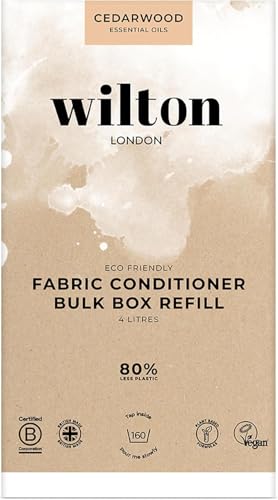




Oil stains can be a real headache, especially when they end up on your favorite clothes. Whether it’s a spill during cooking or a mishap at the dinner table, olive oil stains can be stubborn and difficult to remove. But fear not! With a few simple tips and tricks, you can easily banish those unsightly stains and save your clothes from permanent damage.
First and foremost, it’s important to act quickly when dealing with an olive oil stain. The longer the stain sits, the harder it will be to remove. Start by blotting the stain with a clean cloth or paper towel to absorb as much oil as possible. Be careful not to rub, as this can spread the stain and make it even worse.
Once you’ve blotted away the excess oil, it’s time to tackle the stain itself. One effective method is to apply a small amount of dish soap directly onto the stain. Gently rub the soap into the fabric using your fingers or a soft-bristled brush. Let the soap sit for a few minutes to break down the oil before rinsing the garment with warm water.
If the stain persists, don’t worry – there are still more tricks up our sleeves. Another option is to create a homemade paste using baking soda and water. Mix the two ingredients together to form a thick paste, then apply it to the stain. Let the paste sit for at least 15 minutes before washing the garment as usual. This method works particularly well on stubborn stains and can help to lift the oil from the fabric.
Remember, preventing oil stains is always better than having to remove them. When cooking or eating with olive oil, be mindful of spills and accidents. Use protective aprons or napkins to keep your clothes safe and avoid unnecessary stress. However, if an olive oil stain does occur, you now have the knowledge and tools necessary to fight back and restore your clothes to their former glory.
Effective Methods to Remove Olive Oil Stains from Clothes
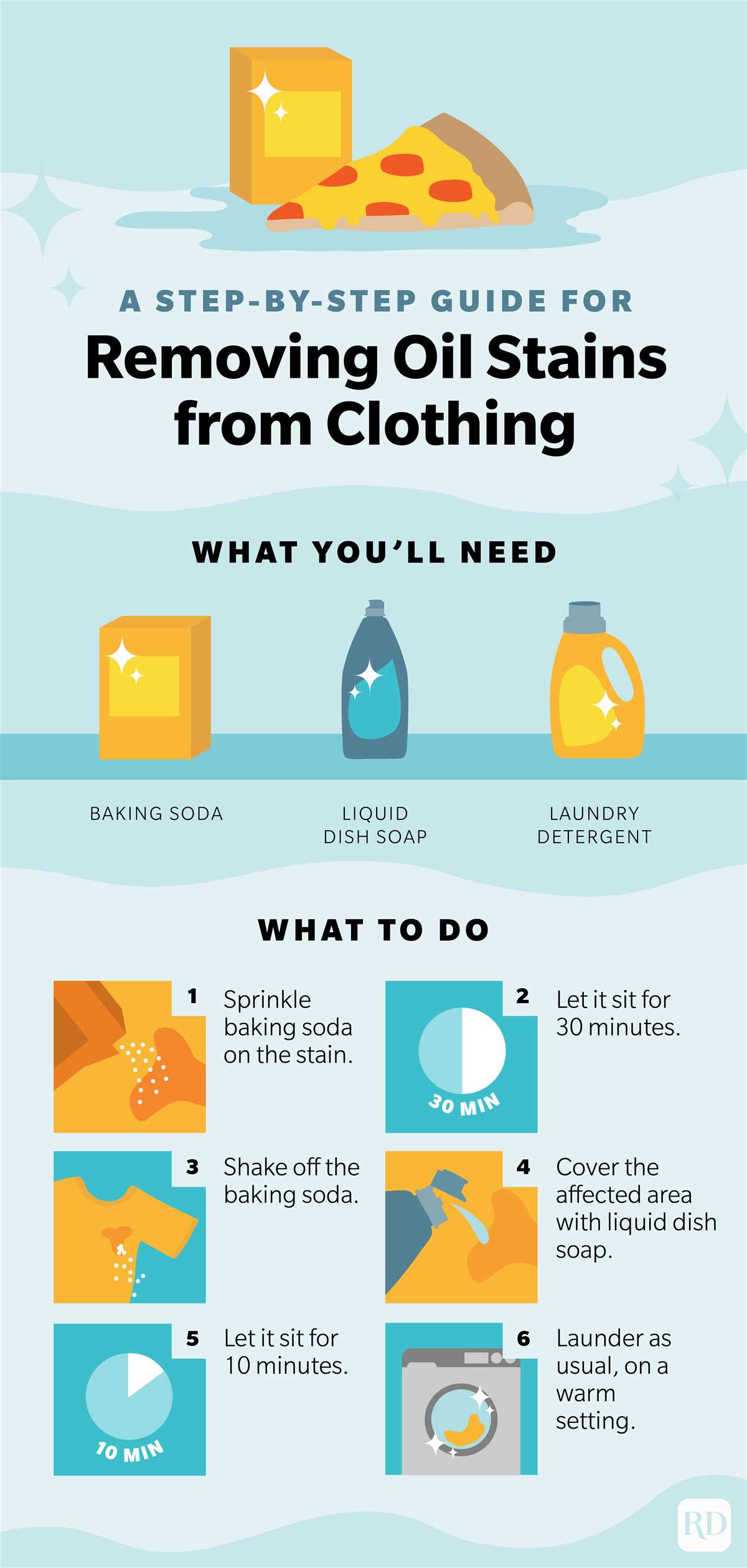
If you’ve accidentally spilled olive oil on your clothes, don’t panic! With the right methods and a few household items, you can easily remove those stubborn stains. Here are some effective ways to get rid of olive oil stains from clothes:
1. Blot the Stain
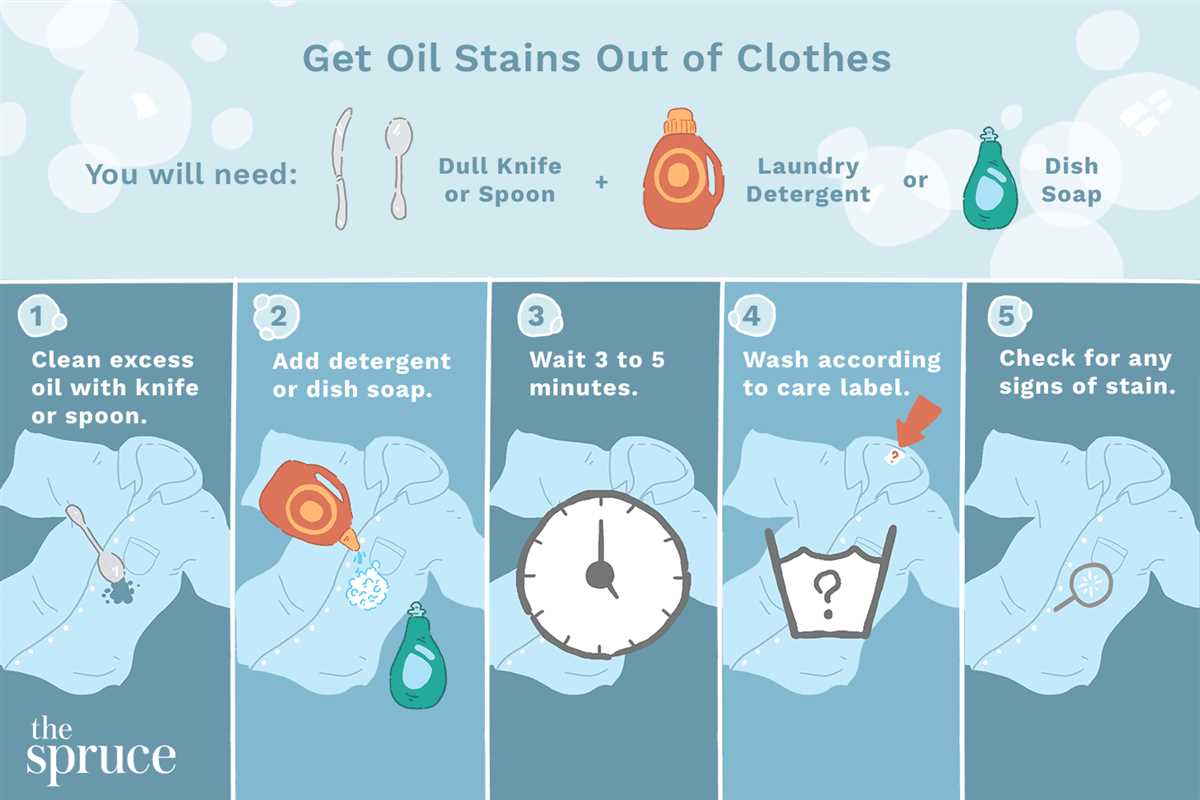
The first step to remove an olive oil stain is to blot the area with a clean cloth or paper towel. Gently press down on the stain to soak up as much oil as possible. Be careful not to rub the stain, as that can spread it further.
2. Treat with Dishwashing Liquid
Apply a small amount of dishwashing liquid directly onto the stain. Gently rub the liquid into the fabric using your fingers or a soft brush. Dishwashing liquid is effective in breaking down the grease from olive oil and helps in removing the stain.
3. Use a Stain Remover
If the dishwashing liquid doesn’t completely remove the stain, you can try using a commercial stain remover. Follow the instructions on the product and apply it directly to the stain. Let it sit for a few minutes before washing the garment as usual.
4. Soak in Warm Water
If the stain persists, soak the garment in warm water for about 30 minutes. This helps in loosening the oil from the fabric. After soaking, rub the fabric gently to further remove the stain.
5. Apply Baking Soda
If the stain still lingers, sprinkle some baking soda on the affected area. Gently rub it into the fabric using a soft brush or your fingers. Let the baking soda sit for a few hours or overnight, then wash the garment as usual.
6. Repeat if Necessary
If the stain isn’t completely removed, don’t worry. You can repeat the above steps until the stain disappears. It may take a few attempts, especially for old or stubborn stains.
Remember, it’s important to tackle the olive oil stain as soon as possible. The longer it sits on the fabric, the harder it may be to remove. Always check the care instructions on the garment before using any cleaning method, and test any cleaning solution on a small, inconspicuous area first.
With these effective methods, you’ll be able to say goodbye to olive oil stains and keep your clothes looking fresh and stain-free!
Pre-Treating with Dishwashing Liquid
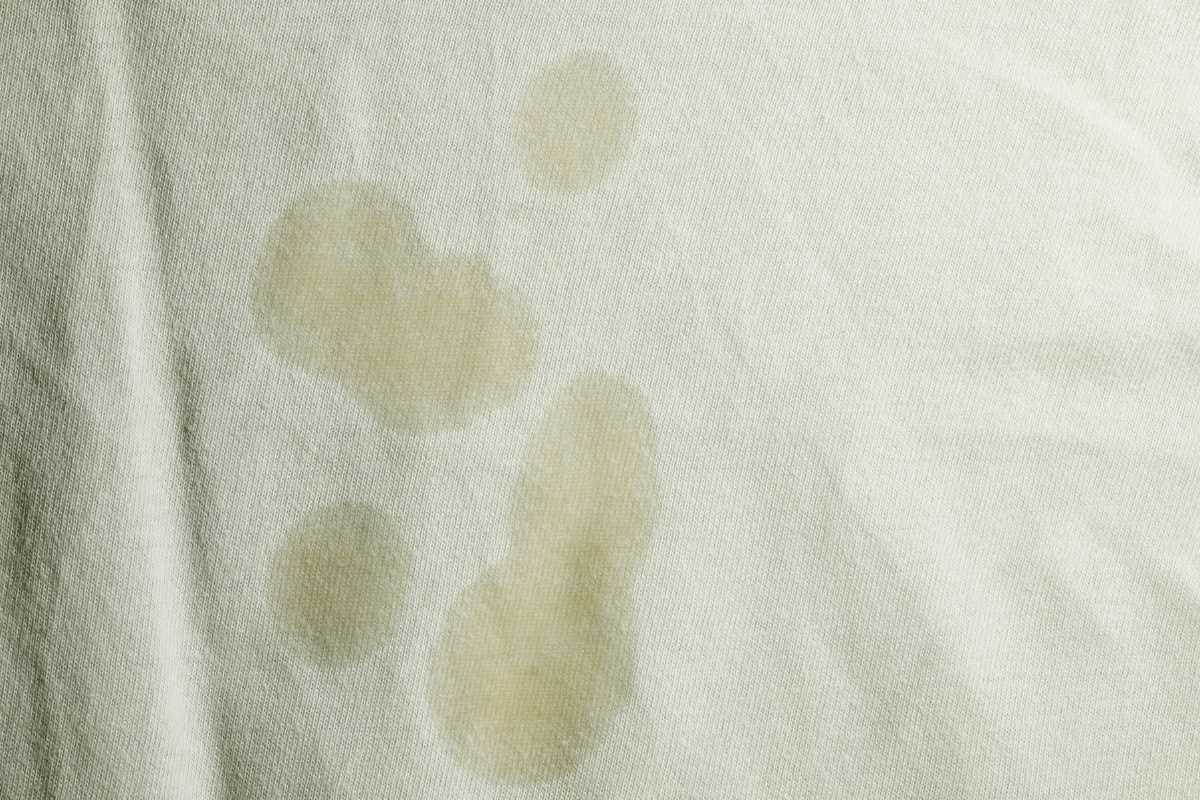
To remove olive oil stains from clothes, you can pre-treat the affected area with dishwashing liquid. Follow these easy steps:
- Gently blot any excess oil from the stain using a paper towel or a clean cloth. Be careful not to rub the stain, as this can make it worse.
- Apply a small amount of dishwashing liquid directly onto the stain. Make sure to cover the entire affected area.
- Gently rub the dishwashing liquid into the stain using your fingers or a soft brush. Be sure to work the soap into the fabric.
- Let the dishwashing liquid sit on the stain for at least 10 minutes to allow it to penetrate the fabric and break down the oil.
- After the 10 minutes have passed, rinse the stained area with warm water. Make sure to thoroughly rinse out all the dishwashing liquid.
Once you have pre-treated the stain with dishwashing liquid, you can proceed to wash the garment as usual. Check the care instructions on the clothing label to determine the appropriate washing method.
Remember, it is always best to treat an oil stain as soon as possible to increase your chances of successful removal. If the stain persists after washing, repeat the pre-treatment process or try an alternative stain removal method.
Using Baby Powder for Absorption
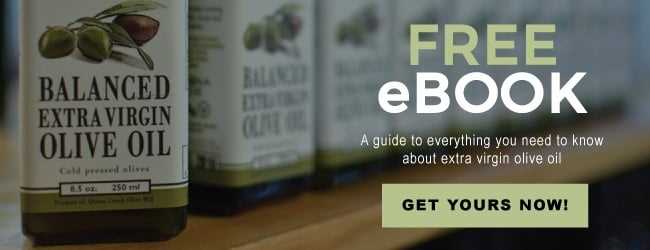
If you find yourself with an olive oil stain on your clothes, don’t worry – baby powder can come to the rescue! Baby powder is great for absorbing oil and grease stains, making it an ideal solution for removing olive oil stains from fabric.
Step 1: Blot the Stain
Start by blotting the olive oil stain with a clean cloth or paper towel. This will help remove any excess oil on the surface of the fabric.
Step 2: Apply Baby Powder
Next, sprinkle a generous amount of baby powder directly onto the stain. Make sure to cover the entire stained area with a thin layer of powder.
Step 3: Let it Sit
Allow the baby powder to sit on the stain for at least 30 minutes. This will give the powder enough time to absorb the oil from the fabric.
Step 4: Brush off the Powder
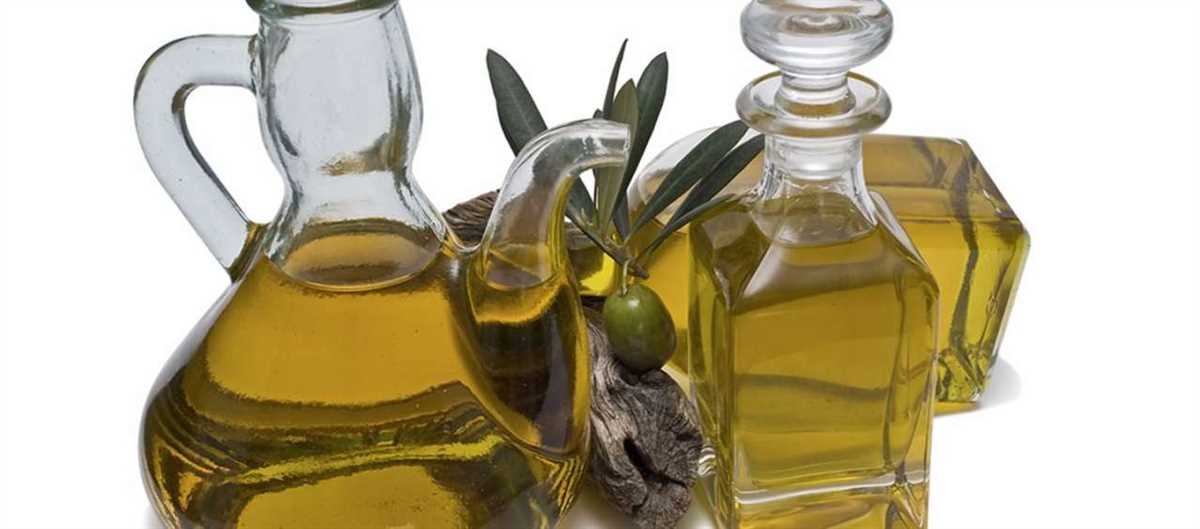
After the powder has had time to work its magic, use a clean brush or cloth to gently brush off the excess powder. Be careful not to rub the stain, as this can cause it to spread or set further into the fabric.
Step 5: Launder as Usual

Finally, launder the garment as you normally would. Check the care label on the clothing to determine the appropriate washing instructions. Once washed, inspect the fabric to ensure the olive oil stain has been successfully removed. If any traces remain, repeat the process or try an alternative stain removal method.
Note: Baby powder is most effective for fresh olive oil stains. Older or set-in stains may require additional treatments or professional cleaning.
Using baby powder to remove olive oil stains from clothes is a quick and easy solution. With just a few simple steps, you can eliminate those pesky stains and keep your clothes looking clean and fresh.
Applying Stain Remover or Laundry Detergent
To remove olive oil stains from clothes, you can apply a stain remover or laundry detergent. Here are steps to help you get rid of the stain:
- First, gently blot any excess oil from the stain using a clean cloth or paper towel. Be careful not to spread the stain further.
- If you’re using a stain remover, apply a small amount directly onto the stain. Make sure to follow the instructions on the product and use gloves if necessary.
- Gently rub the stain remover into the fabric using your fingers or a soft-bristle brush. Be sure to cover the entire stained area.
- Let the stain remover sit on the fabric for the recommended amount of time. This will allow it to penetrate and break down the oil stain.
- If you’re using laundry detergent, mix a small amount with water to create a paste-like consistency.
- Apply the detergent paste onto the stain, covering it completely.
- Gently rub the detergent into the fabric using your fingers or a soft-bristle brush. Ensure all parts of the stain are treated.
- Allow the laundry detergent to sit on the stain for about 10-15 minutes to soak up the oil.
Once the stain remover or laundry detergent has had enough time to work, proceed to washing the garment following the care instructions. Use the warmest water temperature suitable for the fabric. After washing, check to ensure the stain is completely gone before drying the garment.
Note: It’s always a good idea to test stain removers or laundry detergents on a small, inconspicuous area of the fabric before applying them to the stain directly. This will help you avoid any potential damage or color fading.
Utilizing White Vinegar for Cleaning
White vinegar is a versatile and affordable household cleaning agent that can be used in various ways to remove tough stains, neutralize odors, and disinfect surfaces. Here are some tips on how to use white vinegar for cleaning:
1. Removing Stains
White vinegar is highly effective in removing stains from various fabrics, including clothes. To remove olive oil stains from clothes:
- Blot the stain gently with a clean cloth to remove any excess oil.
- Pour a small amount of white vinegar directly onto the stained area.
- Gently rub the vinegar into the stain using a soft brush or sponge.
- Allow the vinegar to sit on the stain for about 15 minutes.
- Rinse the garment with cold water and wash it as usual.
2. Neutralizing Odors
White vinegar can effectively neutralize odors in various areas of your home. Here’s how you can use it:
- Place a small bowl of white vinegar in rooms with strong odors, such as the kitchen or bathroom.
- Leave the bowl overnight to allow the vinegar to absorb the odors.
- Dispose of the vinegar and rinse the bowl before using it again.
3. Disinfecting Surfaces
White vinegar has natural disinfecting properties that make it an excellent cleaner for various surfaces. To disinfect surfaces:
- Mix equal parts of white vinegar and water in a spray bottle.
- Spray the solution onto the surface and let it sit for a few minutes.
- Wipe the surface clean with a damp cloth.
- For tougher stains or dirt, scrub the surface with a soft brush soaked in the vinegar solution.
White vinegar is an eco-friendly alternative to harsh chemical cleaners and can be used in many cleaning situations. Remember to always test it on a small inconspicuous area before using it on a larger surface.
Washing Clothes with Hot Water
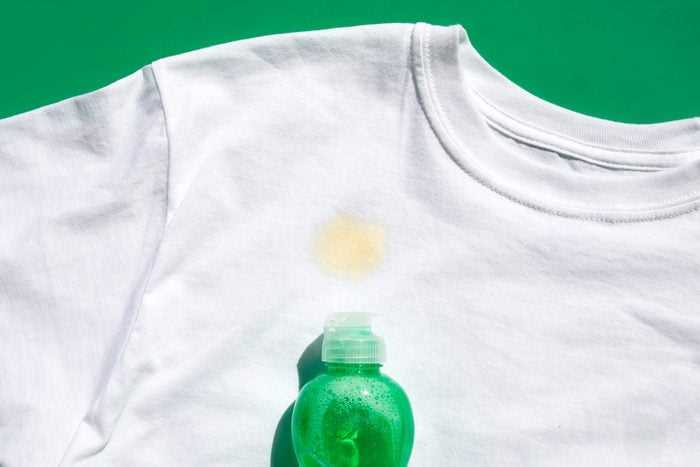
Using hot water to wash your clothes can be an effective method for removing stubborn stains, including olive oil stains. Hot water helps to break down and dissolve the oil, making it easier to remove. However, it’s important to check the care label on your clothing items to ensure that they can be washed in hot water, as some fabrics may be sensitive to high temperatures.
Here are some easy steps you can follow when washing clothes with hot water to remove olive oil stains:
- Pre-treat the stain: Before washing the clothes, it’s best to pre-treat the olive oil stain. Gently blot any excess oil with a clean cloth or paper towel, being careful not to rub the stain further into the fabric. Then, apply a small amount of dishwashing liquid, laundry detergent, or a stain remover directly to the stain. Allow it to sit for a few minutes to penetrate the fabric.
- Check the care label: Before washing the garment, check the care label for any specific instructions or temperature limits. If the item can be washed in hot water, proceed with the following steps. If not, you may need to use warm or cold water instead.
- Select the appropriate detergent: Choose a laundry detergent that is suitable for use with hot water. Look for a detergent that is designed to remove tough stains and oil-based residues.
- Set the washing machine: Set your washing machine to the hottest water temperature setting indicated on the care label. Add the appropriate amount of detergent for the load size.
- Wash the clothes: Place the stained clothing items in the washing machine and start the wash cycle. Allow the machine to complete the full cycle, including the rinse and spin cycles.
- Check for stains: After the wash cycle is complete, inspect the clothes for any remaining stains. If the stain is still visible, it may be necessary to repeat the pre-treatment and washing process.
- Dry the clothes: Once the stains are removed, you can proceed to dry the clothes according to the care label instructions. If the fabric allows, using a dryer on a high heat setting can help to further remove any residual oil and ensure that the clothes are thoroughly cleaned.
Remember to always read and follow the instructions on the care label of your clothing items. When in doubt, it’s best to test any stain removal method on a small, inconspicuous area of the fabric before applying it to the entire stain.
FAQ
What is the best method for removing olive oil stains from clothes?
One of the most effective methods for removing olive oil stains from clothes is to blot the stain with a paper towel to remove excess oil, then sprinkle some cornstarch or baking soda on the stain to help absorb the remaining oil. Allow it to sit for a few minutes, then brush off the powder and rinse the stain with warm water.
Can I use dish soap to remove olive oil stains from clothes?
Yes, dish soap can be an effective method for removing olive oil stains from clothes. Simply apply a small amount of dish soap directly to the stain, then gently rub it in with your fingers or a soft brush. Let it sit for a few minutes, then rinse the stain with warm water.
What can I do if the olive oil stain has set in?
If the olive oil stain has set in, it may require a bit more effort to remove. You can try applying a pre-treatment stain remover to the stain, followed by laundering the garment with a laundry detergent that is specifically designed for removing tough stains. Alternatively, you can consult a professional cleaner for more advanced stain removal techniques.
Are there any home remedies for removing olive oil stains from clothes?
Yes, there are several home remedies that can be effective for removing olive oil stains from clothes. One popular method is to mix equal parts white vinegar and water, then apply the solution to the stain with a cloth or sponge. Another method is to create a paste using equal parts baking soda and water, then apply it to the stain and allow it to sit for a few hours before rinsing.
Will cold water or hot water work better for removing olive oil stains?
When it comes to removing olive oil stains, hot water is generally more effective than cold water. Hot water helps to break down the oil and lift it from the fabric. However, it’s important to always check the care label on your clothing to ensure that hot water is safe to use.
How can I remove olive oil stains from clothes?
To remove olive oil stains from clothes, you can first blot the stain with a paper towel to remove any excess oil. Then, apply a small amount of dishwashing detergent or liquid laundry detergent directly to the stained area. Gently rub the detergent into the stain using your fingers or a soft brush. Let it sit for about 10-15 minutes, then rinse the area with warm water. Finally, wash the garment as usual.
What should I do if the olive oil stain is old?
If the olive oil stain is old, you can try using a pre-treatment stain remover or a mixture of equal parts white vinegar and water. Apply the pre-treatment stain remover or vinegar solution directly to the stain and let it sit for at least 30 minutes. Then, launder the garment as usual. If the stain persists, you may need to repeat the process or take the garment to a professional cleaner.


